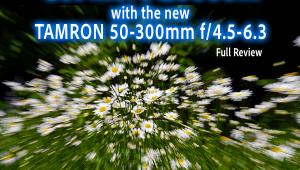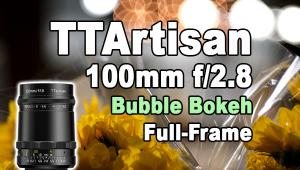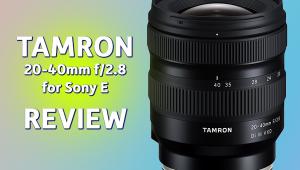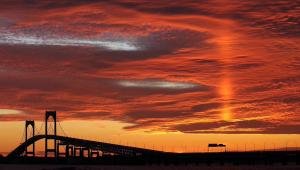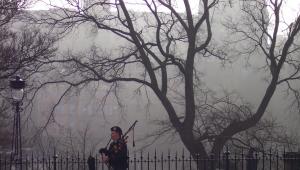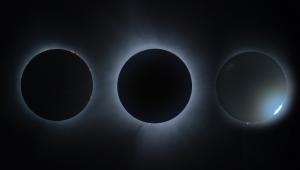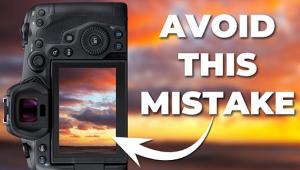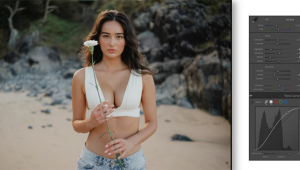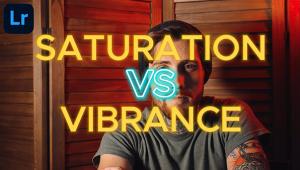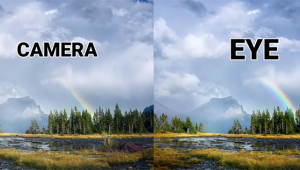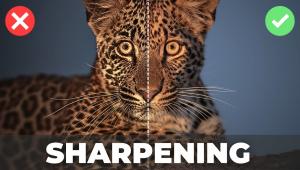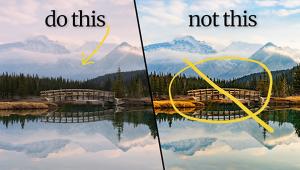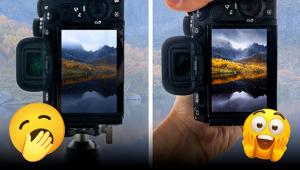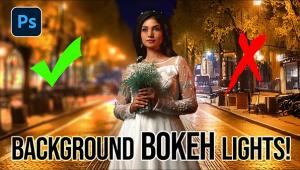Carl Zeiss’ Distagon T* 18mm f/3.5 And Distagon T* 21mm f/2.8 Lenses; Open Wide, Wider Still…That’s It!
When it comes to lenses, the name Carl Zeiss is synonymous with optical perfection or as they say around the Hallmark store, “when you care enough to shoot the very best.” Zeiss continues to expand its line of interchangeable lenses for Canon, Nikon, and Pentax cameras to include two new wide-angle lenses, the Distagon T* 18mm f/3.5 and Distagon T* 21mm f/2.8.
The lenses I tested were provided in Canon EF mount and I shot them with several different EOS D-SLRs, all with different lens multiplication factors. The new Distagon lenses transfer image data to the camera through the use of electronic contacts in their lens mounts which means the aperture setting is controlled directly from the camera body and all of your camera’s Exposure modes, including E-TTL flash metering, are supported. Focus confirmation—these are manual focus lenses—is provided complete with happy audio chirps from the affected focus points in the viewfinder. All lens and exposure data can later be accessed via the captured image file’s EXIF data.
 |
|
|
Distagon is the name Zeiss gives to its wide-angle lenses that use a retrofocus design. Short focal lenses are typically composed of glass elements whose shapes are symmetrical in front of and behind the diaphragm. As focal length decreases, the distance from the rear element to the film plane or digital sensor decreases and could even protrude into the mirror box, requiring the camera to be in mirror lockup mode to use the lens. A retrofocus lens solves this problem by using an asymmetrical design that allows the rear element to be further away from the plane of focus than its effective focal length might normally suggest. In addition to the design, both lenses feature the Zeiss multilayer coating known as T* a.k.a. “T star.” The “T” is from Tarnung, which means camouflage or disguise, and that’s your German lesson for today.
18mm Distagon T* f/3.5
The Distagon T* 18mm f/3.5 lens is surprisingly small and light for its wide 90? angle of view with full-frame sensor cameras with which it can show off its true wide-angle lens performance. Internal focusing helps reduce lens size while delivering precise and smooth focus control using a knurled metal focusing ring—no wimpy rubber coated rings. To prevent aberrations during close focusing, internal lens groups are individually repositioned using floating elements that allow the lens to deliver exceptionally high image quality from extreme close-ups (less than 12”) to infinity. While compact, the front of the lens does require 82mm filters, so if you’re a polarizer user prepare to shell out a few more bucks than a 58mm model costs. (I was surprised to find a slim-mount B+W Circular Polarizer for just a little over $100. More on filters later.)
 |
21mm Distagon T* f/2.8
Because of its one-stop larger aperture than the 18mm Distagon, the 21mm Distagon T* f/2.8 is an ultra-wide-angle lens that is noticeably larger and heavier. In that way it might be considered the low-light star of this pair of super-wides, making it ideal for architectural interiors. The 21mm Distagon prevents color fringing and unwanted lack of focus that result from chromatic aberration, and produces next to no distortion. The lens’ floating elements design produces high imaging performance from close-up to infinity and, with a close focus of less than 8” (.22m), it’s an attractive option for landscape photography as well as other subjects that demand a dramatic perspective. The large 82mm front filter diameter allows for the use of standard albeit expensive screw-in filters when used with the included and reversible lens hood.
 |
In The Field
When’s the last time you got a metal lens hood with a new lens? Both Distagons come with beautifully crafted ones. While we’re talking lens protection, if these lenses were mine, I’d run out and get a Skylight or UV filter to protect them. An 82mm B+W Skylight in slim mount (always recommended for wide-angle lenses) costs about $125, while one of Tiffen’s Digital HT Ultra Clear Glass Filters in 82mm is less than $90 and both provide insurance against accidents or an outbreak of stupidity.
In addition to having a white engraved depth-of-field scale, both lenses feature infrared focus indicators. Because infrared light waves have a slightly different focusing point than visible light, perfectionists should use the infrared focusing mark when using opaque IR filters. With an IR-converted SLR, I just shoot at f/16 or smaller and focus visually or use the camera’s focus confirmation feature. I tested the 18mm Distagon with an EOS Digital Rebel XTi that was converted for IR capture by Life Pixel (www.lifepixel.com) and the balance with the lightweight (18 oz) XTi body was amazing. When using the lens with a camera with a 1.6x multiplication factor there’s the obvious change in effective angle of view to the equivalent of 28.8mm. I was also not prepared for the smaller image seen through the XTi’s viewfinder compared to the full-frame EOS 5D I had for other test shots, but I quickly got over it, shooting almost 300 exposures in anticipation of a big snowstorm the next day blowing the rest of the leaves off trees.
 |
|
|
The Distagon T* 21mm f/2.8 lens is useful for landscapes but if you get vertical man-made objects close to the edge of the frame and tilt the camera even a little bit some perspective distortion is inevitable. You can always do what I did in these examples and use Photoshop’s Transform: Perspective (Edit>Transform>Perspective) command to straighten those tilting lines. Is that cheating? I don’t think so; it’s just making the image look exactly like what you saw with your eyes.
Many shooters, like me for instance, don’t have the budget to own both of these Distagon lenses, so I decided to have an angle-of-view shoot-out. I went to a nearby pedestrian mall, set a Canon EOS 5D on a tripod, and made a series of benchmark exposures with an EF 50mm f/1.8 but not the luscious Zeiss Planar T* 50mm f/1.4 I tested for the August 2009 issue of Shutterbug that’s online at: www.shutterbug.com. The 50mm lens has a 46? angle of view. Without moving the tripod or changing camera settings I made a series of exposures with the 18mm and 21mm Distagons. As you will see, the difference between 50mm and 21mm is tremendous but the horizontal angle-of-view variation between the 21mm (81?) and 18mm (90?) is small as you might expect from a 3mm focal-length disparity, but it also made it obvious the kind of photographer Zeiss was aiming at with these two lenses. The 18mm lens is clearly designed for the landscape photographer who may have to slog through rugged terrain to get to a location and when they get there will place the camera on a tripod, so the f/3.5 aperture is no concern. The 21mm lens is for the available light photographer who is most likely going to hand hold the camera and while it’s heavier than the 18mm Distagon, it’s also faster and easier to manually focus in low-light conditions.
 |
|
|
With wide-angle lenses like this you might be tempted to use them with cameras with lens multiplication factors greater than full frame. There’s nothing wrong with that and both Distagons worked perfectly with EOS cameras with ratios of 1.6x, but keep in mind what you’re losing. To demonstrate, I headed south to the Denver Technological Center and made a photograph showing one of the buildings in that park-like setting with two different cameras: the first was my old full-frame EOS 5D and the second was my new EOS 50D that has a 1.6x multiplication ratio. Each camera was placed on a tripod that was not moved during the shoot while the lens was moved to the new body. As you can see from the comparison images, the results are two completely different images: one usable, one not so much. You are free to draw your own conclusions but mine is that you will get more image value for your money from these wonderful lenses if you shoot them with full-frame cameras.
Both lenses fit comfortably inside Canon’s own prime focal-length line-up and make excellent alternatives for shooters who prefer single focal-length lenses. Canon offers an EF 20mm lens but it is an f/2.8 not f/2. Similarly, there is no lens between the EF 15mm and EF 20mm where the 18mm Distagon comfortably slips. Yes, these lenses are expensive but certainly not unobtainably so and certainly within the ballpark of Canon’s own L-series lenses. (By comparison, an EF 24mm f/1.4L lens costs $1700.) Yes, they are manual focus lenses, although I never once felt like that was an issue when using them, though I will admit that occasionally I would forget to focus.
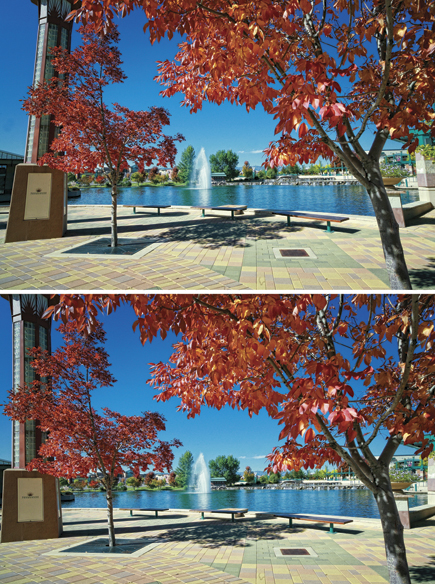 |
|
|
- Log in or register to post comments




